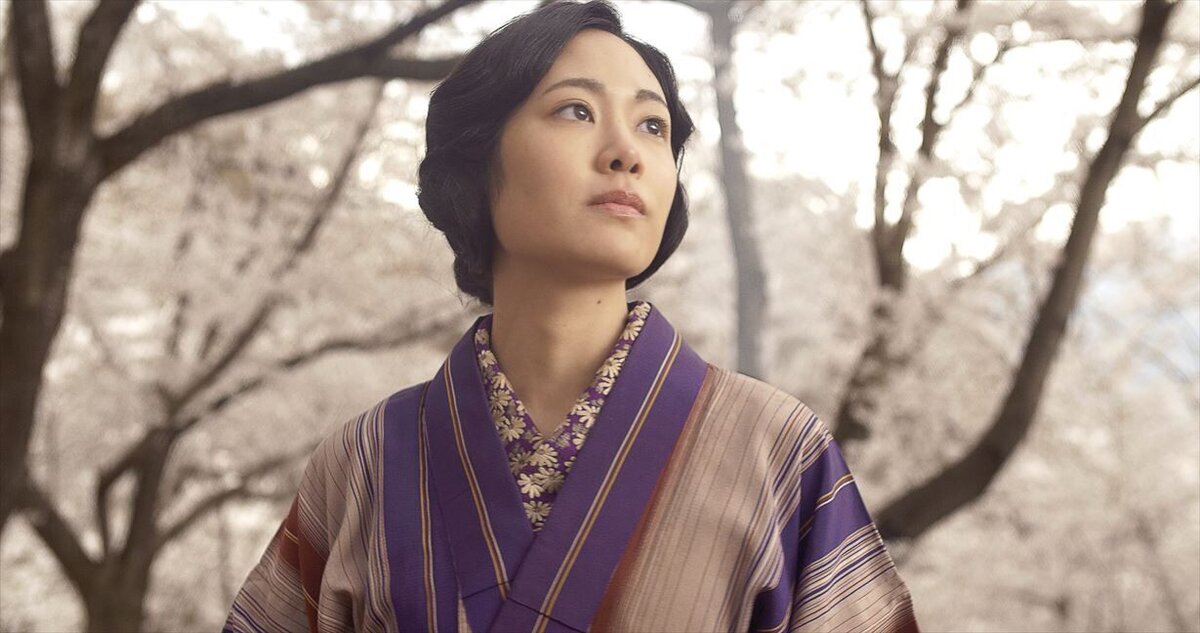«Sorokin no Mita Sakura» - Movie Review by Kinoafisha

In these turbulent times for the whole world, a Japanese film called "The Prisoner of Sakura" is released on Russian screens. It is the second work of director Masaki Inoue, where the culture of the Land of the Rising Sun intertwines with the traditions of the Russian people.
A young journalist is sent to Matsuyama to cover an interesting story about the Russian prisoners of war cemetery. Her colleague has long been interested in this topic and suggests that she go with him to St. Petersburg in search of additional information. It turns out that not everyone is buried in the cemetery because one person managed to escape from the camp and return home. At the same time, Sakura accidentally stumbles upon her great-grandmother Yui's diary, who worked among the Russian prisoners at that time. Now she must understand how her family's history is connected to the Russo-Japanese War and a certain officer named Alexander Sorokin.
When a person finds themselves in captivity, they should expect torment and suffering, which they will alleviate with endless dreams of a warm home and loved ones. Russian officer Alexander Sorokin prepares himself for something similar, but the Japanese camp turns out to be completely different. Here, one can drink alcohol, go to the city center, and even relax in hot springs. At first glance, it may seem like some kind of resort, a respite before the main battle, but, as always, it is just a calm before the storm. In reality, the Japanese treated all prisoners as human beings and provided everything for a comfortable temporary life. Director Masaki Inoue romantically and kindly looks at his compatriots through the prism of a retro camera and does not delve into the details of Japanese history. The essence of the colonizers of the Land of the Rising Sun takes a back seat; nationalism, which still resounds through the streets of modern cities, is not mentioned at all. In Masaki Inoue's film world, none of this exists. And the main question is: why?
"The Prisoner of Sakura" turns away from the documentary aspect and focuses on pseudo-historical storytelling. Of course, battles, dates, language, costumes, and locations are presented in their own authentic way, but the main motif of the whole story becomes human memory. People are accustomed to romanticizing their past, which is why Inoue does not try to pursue realism and instead pays more attention to artistic elements and a certain naturalistic fantasy. The story of two people caught in the captivity of circumstances is shown through the perspective of their descendants, who piece together all the events through sentences written several decades ago. During this time, languages, countries, traditions, and, of course, people have changed. But what does it mean to be a person captive to their own memory? This question is magnified to immense proportions by Masaki Inoue.
"This is war. You fought for your country, and my brother fought for his. No one is to blame here," the main heroine says tearfully to the Russian officer. It is a logical and empathetic conclusion that is often ignored during any conflict. Through his characters from the past and present, Masaki Inoue attempts to show what it means to be human and how our actions define us. The inaction of the Japanese, the owners of the prisoner of war camp, may seem utopian, but it also illustrates the images of the Russians.
It is in these moments that sakura appears, though only in conversations, because none of the captured soldiers lived to see spring. And the symbolism of the blossoming of this beautiful tree turns out to be very simple and essentially the most humane. Originally, sakura was perceived as the herald of spring, and it was convenient to predict Japan's harvest based on it. Over time, the meaning changed and was modified in different ways, even signifying sacrifice for many people. But all these transformations converged to the unified meaning of sakura as a symbol of peace, friendship, and well-being.
It is precisely this last concept that Masaki Inoue borrows for his story. Unlike his first work, "Reminiscence," he hides behind the camera and fully trusts the vision of cinematographer Tomoaki Ivakura. This macroscopic view of the film focuses on various small details. Mandarins, candles, paper doors, diary pages, and other objects fill the composition of the frame, creating lyrical interludes.
The film itself does not have a specific target audience. However, the story portrays the relations between Russia and Japan during the Russo-Japanese War, and it may seem that the film will engage in some form of propaganda. Even if such an effect is present, it works in both directions, elevating and honoring each side. Nevertheless, the main theme of the film remains the realization of humanity in the past and the present. If we discard all the symbolism, Masaki Inoue's new work will appeal to people in love with Japanese culture and the genre of historical drama.